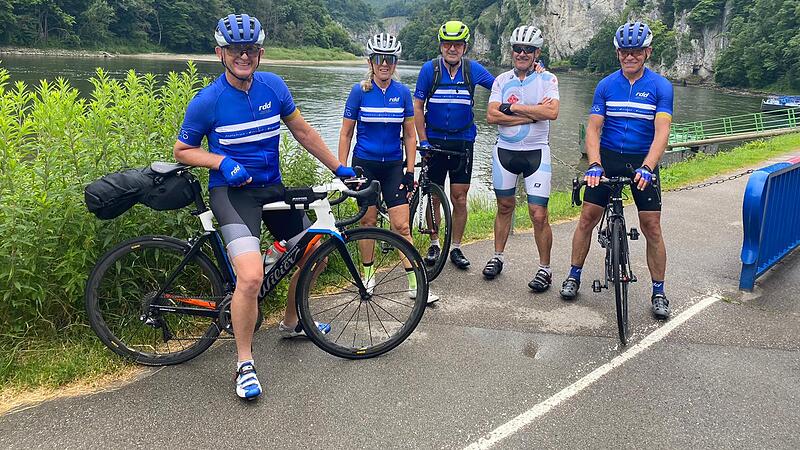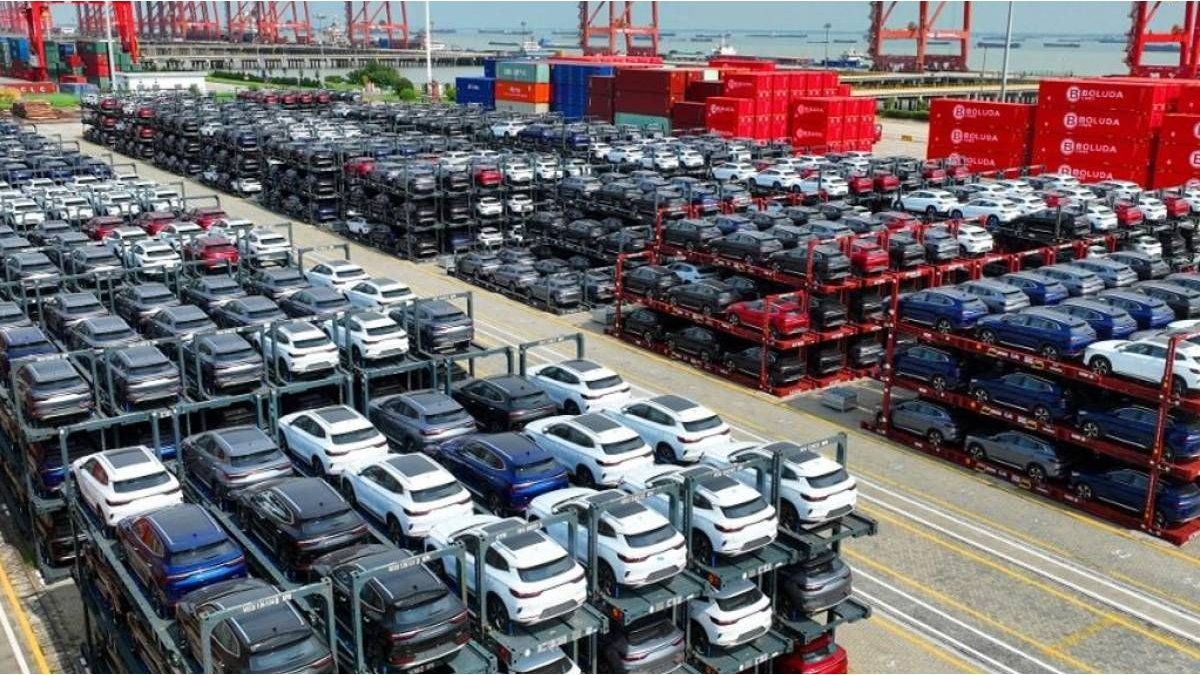First of all: For a number of reasons, this undertaking is more difficult, but at least as attractive. Down the Danube there are hardly any counter climbs. It goes from 312 meters above sea level in Passau to 190 in Vienna, and it’s only around 330 kilometers. Donaueschingen, on the other hand, is at almost 700 meters and there are quite a few hills to conquer every day.
First: The challengers
This is also because, unlike the stairways in Austria, there are many detours to be made in Bavaria. In fact, 80 percent of it is not a Danube cycle path, but cycling through the wide Danube plain, first in Lower Bavaria, then in Swabia. In terms of landscape, this means that it is less through forests or alluvial forests, but mostly along grain, beet and above all potato fields.
Between Kelheim and Ingolstadt the hop cultures increase, because that is the northern edge of the Hallertau, with around 240,000 hectares the world’s largest cultivation area for the most important raw material for brewers (for comparison: Mühlviertel with 135 hectares).
Ironically, the beautiful stretches along the run-of-river power plants are mostly made accessible by rough gravel paths. Dust-free alternative routes sometimes lead for kilometers into the hinterland. You have to switch between several cycle paths again and again, once left, then right again, also because the confluences of the many stormy rivers from the Alps (from east to west: Vils, Isar, Laaber, Ilm, Paar, Lech, Günz , Iller, etc.) make routing close to the river more difficult.
With a touring bike or mountain bike it is more direct, i.e. fewer kilometers, at lower speed and less comfort. This means: good preparation for route guidance.


Second: the friends
But there is an outstanding plus: Unlike in Austria, cyclists are also valued on the road. Along most interurban roads there are cycle lanes separated by green strips, sufficiently wide and in good condition. Cycle lanes often lead through the many towns and cities, giving priority to motorized through-traffic (red shading warns motorists to turn). The motorized show consideration for the two-wheelers, almost caring.
This is a safety factor when the lane has to be changed. And the second big plus: There are nice hosts everywhere who not only offer good accommodation and fine regional food, but also understand the guests. After two hours of pedaling through rain and dirt, the Neuwirt in Neuburg an der Donau fetches the garden hose to wash the wheels, as well as cleaning rags and chain oil to get the machine going again. He also serves delicious wheat beer for the thoroughly filthy cyclists and then has their jerseys and trousers washed.
Third: The Companions
Neuburg is one of the many eye-openers for the great history and building culture in southern Germany. We Austrians find our history and culture outstanding, and also admire those in Italy, Greece or France. We treat our Bavarian neighbors with contempt, although great Austrian history was written here, especially that of the Habsburgs.
The dukes of Pfalz-Neuburg had a close bond with them, reigned on a magnificent castle hill, with a view of the Danube and an island in the river. Of course we know about Passau, the most beautiful city on the Danube (before Budapest and Linz, especially before Vienna, which is only on the Danube Canal). Most people know Regensburg with the colorful old town and the stone bridge. Ulm with the highest church tower in the world and its nice fishing district are highlights of a cultural bike tour. The inner cities of Deggendorf, Straubing or Donauwörth are impressive and document the common history with Upper Austria.
When cycling across the country we see many church towers whose contours we know from the Innviertel. There are a few indispensable detours: Despite the few meters of altitude, we recommend the northern route from Straubing to Regensburg with a driveway to the Walhalla. In the copy of a Greek temple, Bavaria’s great King Ludwig I honored the heroes; we enjoy the magnificent view over the Gäuboden, one of the most fertile regions in Central Europe.
Ancient Greece, the Germanic heroes, the Bavarian kingdom, and around 30 kilometers to the south you can see the steam mushroom of the Ohu nuclear power plant on the Isar rising into the sky; it will probably be switched off by the end of the year. The “Kini”, grandfather of the legendary Ludwig II, also had a hand in the mighty Liberation Hall on the rocky outcrop between the Danube and Altmühl near Kelheim. Like the Walhalla, it was intended to promote the German community spirit. Statues come from the Schwanthaler sculptor dynasty, which also left strong traces in Upper Austria.
Fourth: surprises
An enchantingly beautiful spot is Weltenburg Abbey, which can only be reached from Kelheim via a mountain route. The Benedictines wanted to make their statement of faith for all time, where the Danube has broken its way through a rock massif in a large loop like in Schlögen. The Romans fought off the invading Germans with a bastion of the Limes border wall.
In the bright sun, we are walking along golden grain fields when two large cooling towers appear on the state border with Baden-Württemberg, in front of Ulm. They belong to what was once Germany’s most powerful nuclear power plant, Gundremmingen. The last block has been shut down since the end of 2021.
After the first ascents in the Swabian Jura, we shoot down to Sigmaringen, which is as slender (15,000 inhabitants) as it is magnificent. The castle of the Hohenzollerns, whose descendants as kings of Prussia and German emperors (1871-1918) wrote mighty history, towers over the Danube. A spectacular sideline: The Vichy government of Nazi ally Marechal Pétain fled to Sigmaringen in 1944 and maintained a huge staff of the (still) official French government here until liberation in spring 1945.
The last passage to Donaueschingen is also surprising: the young river winds its way through a narrow valley, in which the cyclists are very close to their guideline over a long distance of 90 kilometers for the first time. It’s like a miracle that the stream created by the confluence of the Brigach and Breg rivers can first seep away underground (near Tuttlingen) and then develop the power to break through a rock barrier to Sigmaringen.
We finally stand content on the famous Danube


between the town church and the Fürstenberg Palace. It is artificially created; the Bregquelle would be a few hundred meters higher in the valley. But we are satisfied with the symbolic act. Nevertheless, it is advisable to crank further up into the Black Forest, to Lake Titisee or up the Feldberg. Things are looking up now.
Source: Nachrichten




